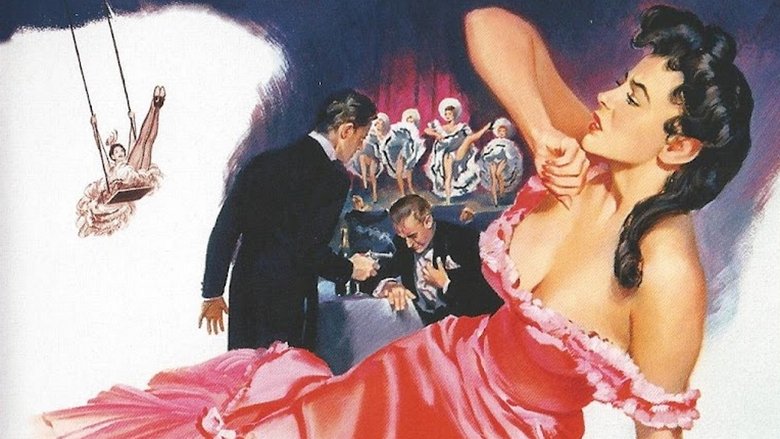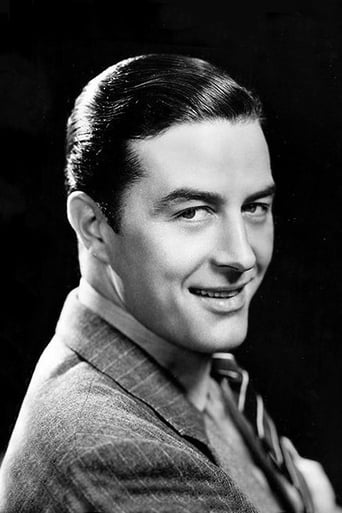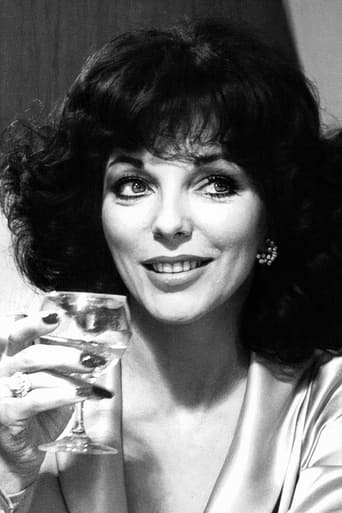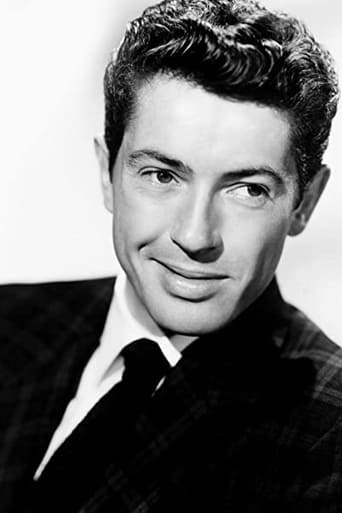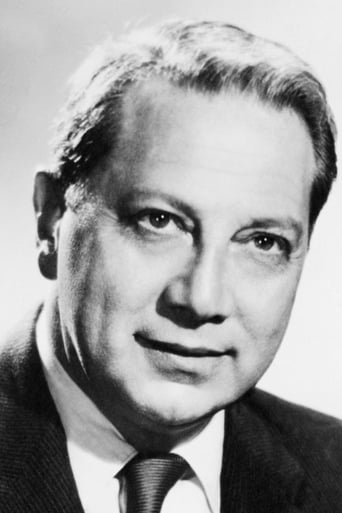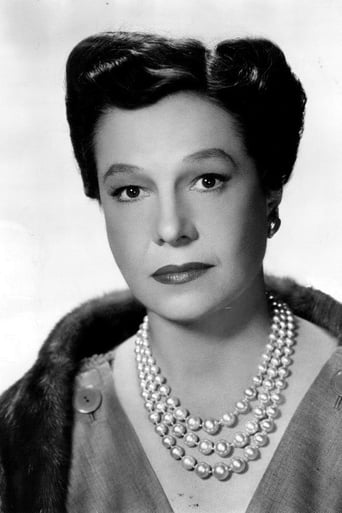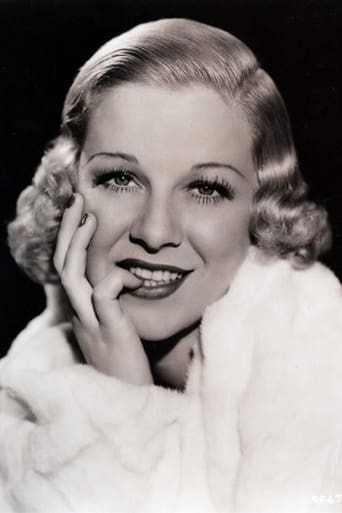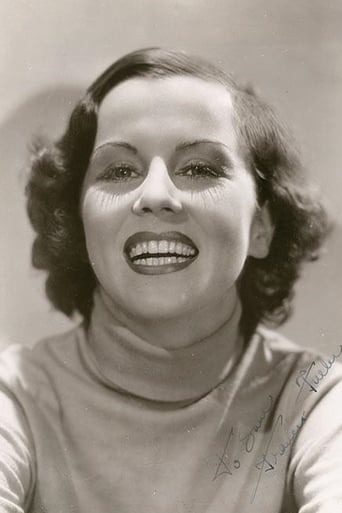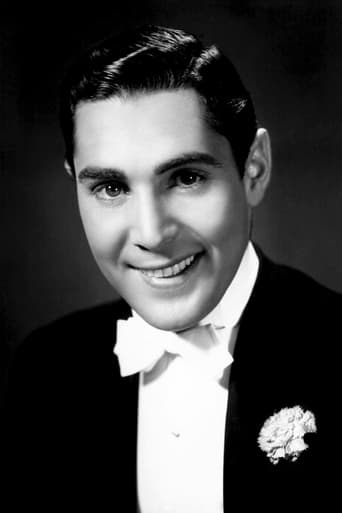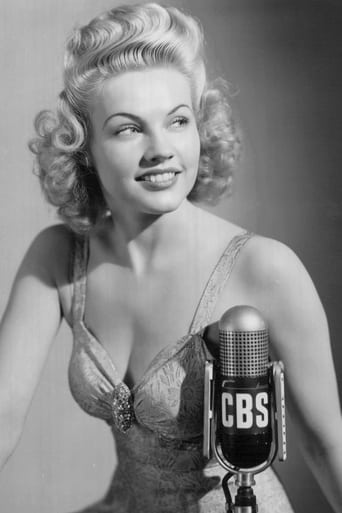
The Girl in the Red Velvet Swing
October. 01,1955Broadway showgirl Evelyn Nesbit (Joan Collins) is the object of affection of two men: playboy architect Stanford White (Ray Milland) and wealthy but unstable Harry Thaw (Farley Granger). She marries Thaw, but White’s continued pursuit puts him in the path of Thaw’s volatile temper. Inspired by true events that occurred at the turn of the 20th century.
Similar titles
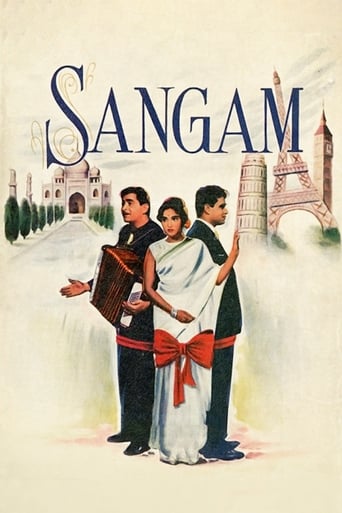
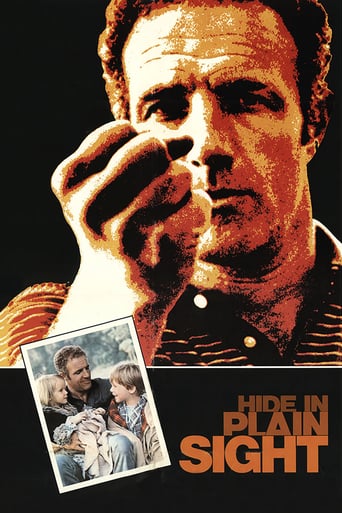


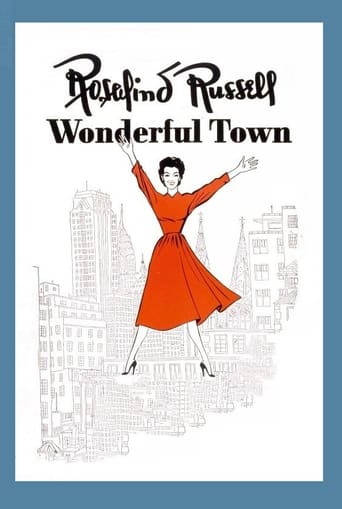

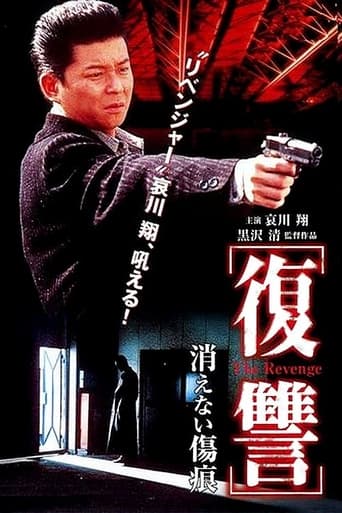
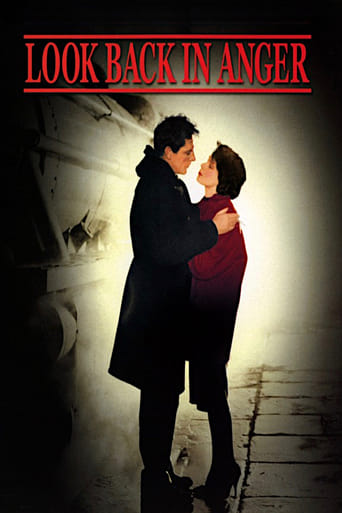
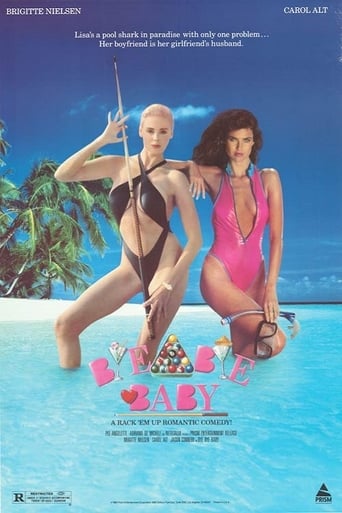

Reviews
Terrible acting, screenplay and direction.
Excellent adaptation.
A Disappointing Continuation
Story: It's very simple but honestly that is fine.
On 25th June 1906 Stanford White, one of America's most famous architects, was shot dead in Madison Square Gardens (a building he had designed himself) by a millionaire rail and coal tycoon named Harry Kendall Thaw. Thaw's motive was sexual jealousy; he believed that White was having an affair with his beautiful young wife Evelyn. White certainly had at one time been one of Evelyn's numerous lovers, but their relationship had in all probability ended before her marriage to Thaw. Thaw was tried for murder, but was found not guilty by reason of insanity. What made the crime one of the notorious causes celebres of the Edwardian era, apart from the fame of the victim and the wealth of the perpetrator, was the fact that Evelyn, under her maiden name of Evelyn Nesbit, had been a famous model and actress in her own right, one of America's first "pin-up girls" and an early example of what would today be known as the "celebrity culture". The film relates this story in a somewhat fictionalised form. The main change is to soften the character of Evelyn Nesbit, which is perhaps not surprising as she was still alive in 1955 and even served as a technical adviser on the film. (Thaw had died in 1947). Her relationship with White is kept rather ambiguous; the two are portrayed as having been in love, but not necessarily lovers in the sexual sense. Although White loves Evelyn, he is unable to marry her because he is still fond of his wife Elizabeth and does not want a divorce, so he treats her almost as an adopted daughter, paying for her to attend an exclusive girls' finishing school. The leading role was originally intended for Marilyn Monroe, who turned it down; it eventually went to Joan Collins, who bore a greater physical resemblance to the historical Evelyn Nesbit than did Monroe. After her roles in films like "The Bitch" and television series like "Dynasty", Collins today has gained a reputation for specialising in playing seductive villainesses, but during her Hollywood heyday in the fifties and sixties she was as much at home playing heroines, and here she plays Evelyn as a sweet and naïve young thing bemused by the passions she arouses in men, especially the obsessively jealous Thaw. (Whether the real Evelyn Nesbit was quite as innocent is another matter). Ray Milland bears little physical resemblance to the real Stanford White, who was a burly, red-headed man with a very prominent moustache. By all accounts he was a practised womaniser, with a particular liking for teenaged girls, and probably less kindly and avuncular than the character portrayed here. The film's rather odd title derives from the fact that one of White's sexual fetishes was to have Evelyn, and his other mistresses, perform for him on a red velvet swing at his home. Another change which the film makes to the facts of the real case is that Stanford and Elizabeth are here portrayed as being the same age; in reality she was considerably younger than him. The best acting contribution comes from Farley Granger as the arrogant, self-obsessed and pathologically jealous Thaw. Granger is today perhaps best remembered for the two films he made with Alfred Hitchcock, "Rope" and "Strangers on a Train", and there are certainly similarities between Thaw and Phillip Morgan, the character Granger played in "Rope". Both are spoilt young men, from wealthy, privileged backgrounds and both have an ineradicable sense that their background entitles them to have anything they want. Both are so arrogant that they literally believe that they can get away with murder, Morgan because he believes himself to be intellectually superior to anyone who might try to investigate his crime, Thaw because he believes that his wealth will effectively enable him to buy his acquittal. (He is partially correct in this belief; the verdict of "not guilty by reason of insanity" means that he escapes the death penalty). The film was directed by Richard Fleischer, a versatile director who seemed able to work in virtually any genre, including film noir ("The Armoured Car Robbery"), science fiction ("20,000 Leagues under the Sea", "Fantastic Voyage"), the historical epic ("The Vikings"), and sword-and- sorcery fantasy ("Conan the Barbarian", "Red Sonja"). He did, however, also make a number of films based on real-life murder cases, including this one, "Compulsion" (loosely based upon the Leopold-Loeb case which also inspired "Rope") and "Ten Rillington Place" (based upon the career of the British serial killer John Christie). These three films are very different in terms of their visual style. "Compulsion" was shot in black-and white, influenced by the films noirs in which Fleischer had specialised in the earlier part of his career. "Ten Rillington Place" was filmed in a bleak, washed-out colour with a palette dominated by greys and dull browns and greens, giving a look appropriate to Christie's seedy lifestyle and to the run-down London of the post-war austerity years. "The Girl in the Red Velvet Swing", by contrast, was shot in a much richer, brighter colour, reflecting the glamorous worlds of New York high society and of the turn-of-the-century theatre. In its emphasis on recreating the fashions and styles of the Edwardian era it can be seen as an early example of "heritage cinema". I wouldn't rate "The Girl in the Red Velvet Swing" quite as highly as highly as Ten Rillington Place", possibly Fleischer's finest film with two particularly strong acting performances from Richard Attenborough as Christie and John Hurt as the hapless Timothy Evans. It is, however, a very entertaining account of a "true crime" scandal of sex and violence in high places. 7/10
First some truths and then a review of the film itself.Evelyn Nesbit, from my own impressions of her recent bio, American Eve, and a clip of her singing from 1930, was a coarse, cheap, nearly talentless beauty of 1906 - all this faded by 1930, when she looked quite plain and homely. Stanford White was obese, a womanizer and a trafficker in underage virgins. Harry Thaw was a madman, pure and simple, protected by his wealth. He also was quite plain and homely. Evelyn's mother was also a trafficker, for her daughter - she makes GYPSY's Madame Rose look like Melanie Hamilton.Hollywood could not have produced a film true to the characters in 1955. It would never have passed the censors. You didn't touch motherhood then. GYPSY on stage was four years later.Given the basic narrative structure of the facts, and allowing for Hollywood's restrictions, THE GIRL IN THE RED VELVET SWING is for me an excellent filmization of this narrative. Beautifully photographed and given sumptuous production design as well as excellent casting, it stands as a very interesting "take" on the "crime of the century."I applaud it and its makers. For something truer to the original characters, visit the segments in RAGTIME devoted to this story. Elizabeth McGovern's turn as the passive, dim-witted Evelyn is much truer to the real woman and deservedly brought her an Ocar nomination.Shame on the Academy for denying it any noms- it deserved recognition in the Cinematography, Art Direction and Costume Design categories. Farley Granger gives his best performance as the deranged Thaw. Glenda Farrell as Mrs. Nesbit also deserved consideration in the supporting category.Interesting to note that the love theme is a blatant steal from Max Steiner's Melanie and Ashley love theme in GONE WITH THE WIND, borrowing the first two stanzas of that theme.If they ever film the bisexual Granger's fascinating life, consider Michael Ellison, the sensitive young actor of THE BEST MEN - a look alike with hidden depths.Do see THE GIRL IN THE RED VELVET SWING and RAGTIME in succession to get an overall impression of this fascinating triangle.
The story of the love triangle of Stanford White, Evelyn Nesbit and Harry Thaw was a HUGE story back in the early 20th century. The resulting trial was dubbed 'the trial of the century'...that is until the NEXT trial of the century occurred soon after!!! The story had it all--sex, insanity, jealousy, a beautiful young nymph and murder! And, as a result, the story really could not have been adequately told until more recently--mostly due to the Production Code which forbade a frank discussion of the sex lives of these folks. So, when I watched "The Girl on the Red Velvet Swing", I realized that it was so sanitized that it was practically a work of fiction--after all, the real story never would have passed the censor boards! In the early 1980s, the film "Ragtime" explored this sensational crime, but only on the periphery. The sensational murder was portrayed, but the lives and personalities of those involved were pretty much a cypher. You can't entirely blame the film makers, as the trial and murder were not the main focus of the film. So, because of a sanitized and sketchy version of this affair, you are left wanting more--the true and complete story--a story that I still do not fully understand."The Girl on the Red Velvet Swing" is mostly told from the viewpoint of Stanford White and Nesbit. While Harry Thaw is definitely in the film, he's mostly shown as a quick-tempered and one-dimensional nut. While this might just be the real Thaw, it just seemed a bit vague. And as for White and Nesbit, you'd think that their relationship was 100% platonic...which it wasn't. In fact, no real hint of sex between ANYONE is really evident in the film! As a result, the actors all seemed a bit flat--like there was so much more that was unsaid. Joan Collins (Nesbit) was very pretty and did fair in the film but not much more. Ray Milland (White) was rather gallant...too gallant. And, Farley Granger (Thaw) was mostly angry and nutty throughout! None of these characters were written well and the actors had little with which to work. As a result, the looked pretty but was pretty empty as well. It's actually pretty remarkable how dull this story was considering how exciting the actual tale was! By comparison, the story of Leopold & Loeb (in "Compulsion"--the next 'trial of the century' that took place in the 1920s) was fascinating, deep and involved (with a hint of a homosexual undercurrent)--even though it, too, was made in the 1950s. This movie is aching for a complete remake. In fact, it might even do well as a mini-series--as there is a lot to this weird story.This film is like a pie made entirely of meringue. It looks nice but is too sweet and not particularly filling.
If you made a completely factual account of the famous Thaw-Nesbit-White triangle which scandalized the folks of the Theodore Roosevelt era, I suspect none of these people would be regarded as innocent. But with 20th Century Fox entitling their film about the case The Girl In The Red Velvet Swing you know the accent will be on Joan Collins as Evelyn Nesbit as a wronged woman.Collins with her involvements first with the married Stanford White played by Ray Milland and later marrying the homicidal Harry K. Thaw played by Farley Granger is shown as a girl just in over her head before she realizes it. In real life pushed by an ambitious stage mother, chorus girl Evelyn was well aware of her spectacular beauty even as a teen and it was as a teen that she met Stanford White who seduced her.White on the other hand was a notorious rake, a fact his wife in the film played by Frances Fuller realizes and accepts. In the beginning he sees her off to Europe and Ray Milland is off to fun and frolic. If you see a picture of the real Stanford White he had a huge handlebar mustache which no doubt tickled many fancies. Milland plays him clean shaved.And Harry Thaw was definitely a candidate for the rubber room. Of the three in the triangle Farley Granger more closely captures his character than either Milland or Collins. What is not shown is that in addition to his psychological problems, Thaw was also a drug addict. That was not something discussed in polite society and in fact a subject rarely brought up by Hollywood during the rule of the Code. The same year The Girl In The Red Velvet Swing came out, Hollywood finally an honest film about dope addiction with Otto Preminger's The Man With The Golden Arm.None of these people are candidates for sainthood. White, the most brilliant architect of his time was a rake, Nesbit was a gold digger and more than likely may berated have husband Thaw with tales of Stanny's sexual prowess and Thaw was just nuts.So tilting this film toward Nesbit gave us the film we have which is not a bad one. Collins, a third choice to play Nesbit after Marilyn Monroe and Sheree North, was definitely great in the role. The film is more or less factually true, but it's all a question of spin.
Top Streaming Movies











